 The traditional cottage garden of the past was a practical garden that included vegetables and herbs. The herbs were important to the cottage gardener for their usefulness especially in regard to medicinal uses. They were also used for dyes, toiletries, cleaning agents, and air fresheners. Sweet smelling herbs were especially valued and some were spread on the floors of the cottages where their scent was released as the cottagers walked about. Out doors, cottagers enjoyed the fragrance of herbs as they brushed by them. Herbs mingled with flowers and vegetables in the garden and served many purposes.
The traditional cottage garden of the past was a practical garden that included vegetables and herbs. The herbs were important to the cottage gardener for their usefulness especially in regard to medicinal uses. They were also used for dyes, toiletries, cleaning agents, and air fresheners. Sweet smelling herbs were especially valued and some were spread on the floors of the cottages where their scent was released as the cottagers walked about. Out doors, cottagers enjoyed the fragrance of herbs as they brushed by them. Herbs mingled with flowers and vegetables in the garden and served many purposes.
Here are five sweet smelling herbs that would have been found in traditional cottage gardens of the past.
 Rosemary
Rosemary
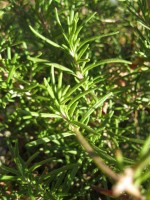 A large bush of common rosemary, Rosmarinus officinalis, would have been in every cottage garden. A variegated form described in 1629 may have been included too. Much superstition and lore surround rosemary and the cottage gardener would have had many uses for it. Sprigs were used in wedding bouquets as well as placed in coffins at funerals, leaf infusions were believed to cure a variety of ills, and an ointment made from the oils was used to benefit those with rheumatism, eczema, sores, bruises, and wounds.
A large bush of common rosemary, Rosmarinus officinalis, would have been in every cottage garden. A variegated form described in 1629 may have been included too. Much superstition and lore surround rosemary and the cottage gardener would have had many uses for it. Sprigs were used in wedding bouquets as well as placed in coffins at funerals, leaf infusions were believed to cure a variety of ills, and an ointment made from the oils was used to benefit those with rheumatism, eczema, sores, bruises, and wounds.
-
Light: Full sun
Soil: Well-rained, pH 6.5-7.0
Hardiness: Zones 8-10
 Mint
Mint
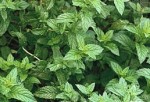 Several different kinds of mint were popular for their various scents and uses. Water mint (Mentha aquatica) has a stronger scent than peppermint or spearmint and was strewn on floors. Spearmint (M. spicata) was used to make mint tea for headaches, heartburn, indigestion, gas, and sleeplessness. Apple mint (M. suaveolens) with its large very fuzzy has a clean sharp scent and is particularly good with new peas and new potatoes in addition to its usefulness in curing digestive troubles. M. gentiles, called “cow basil” by the 16th century English herbalist Gerard, is exceptionally fragrant without being touched.
Several different kinds of mint were popular for their various scents and uses. Water mint (Mentha aquatica) has a stronger scent than peppermint or spearmint and was strewn on floors. Spearmint (M. spicata) was used to make mint tea for headaches, heartburn, indigestion, gas, and sleeplessness. Apple mint (M. suaveolens) with its large very fuzzy has a clean sharp scent and is particularly good with new peas and new potatoes in addition to its usefulness in curing digestive troubles. M. gentiles, called “cow basil” by the 16th century English herbalist Gerard, is exceptionally fragrant without being touched.
-
Light: Full sun
Soil: Rich, moist, well-drained, pH 6.5
Hardiness: Varies with the species
 Chamomile
Chamomile
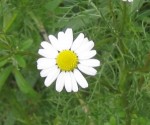 Roman chamomile (Anthemis nobilis), also called creeping chamomile, has a lovely apple scent and is well known from the tale of Peter Rabbit whose mother soothed his headache with chamomile tea. The leaves are brilliant green, have a fine texture and make an excellent lawn in England. The flowers are used to make a tea to calm nerves and induce sleep.
Roman chamomile (Anthemis nobilis), also called creeping chamomile, has a lovely apple scent and is well known from the tale of Peter Rabbit whose mother soothed his headache with chamomile tea. The leaves are brilliant green, have a fine texture and make an excellent lawn in England. The flowers are used to make a tea to calm nerves and induce sleep.
-
Light: Full sun to partial shade
Soil: Light, dry, pH 6.7
Hardiness: Zones 6-9
 Southernwood
Southernwood
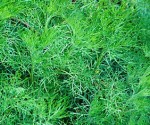 With common names like lad’s love and maid’s ruin you might guess that the plant was once used in aphrodisiac potions and perfumes. Southernwood (Artemisia abrotanum) is a many branched perennial that grows into a large bush like rosemary and has a fine, feathery texture. Its lemon scented leaves are useful to ward off moths where woolens are stored.
With common names like lad’s love and maid’s ruin you might guess that the plant was once used in aphrodisiac potions and perfumes. Southernwood (Artemisia abrotanum) is a many branched perennial that grows into a large bush like rosemary and has a fine, feathery texture. Its lemon scented leaves are useful to ward off moths where woolens are stored.
-
Light: Full sun
Soil: Average, well-drained, pH 6.7
Hardiness: Zone 4-8

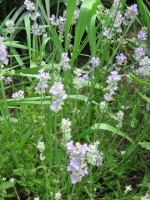 Lavender
Lavender
It is hard to imagine a garden with sweet smelling herbs that does not have lavender. There are at least 8 different species of lavender but the one most likely to be found in a traditional cottage garden of the past is Lavendula augustifolia, English lavender, native to the Mediterranean region rather than England. In addition to being a beautiful ornamental, it has been used in herbal medicine to cure a variety of ailments and to induce relaxation. The flowers have long been used for perfume, soap, and sachets, and are known to repel clothes moths. Good modern cultivars are ‘Twickle Purple’ and ‘Hidcot Purple’.
-
Light: Full sun
Soil: Light well-drained, pH 7.1
Hardiness: Zones 5-8
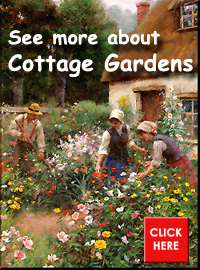 All of these herbs are readily available and so can be easily used in a modern cottage garden. Some of them like lavender, will be avaialbe as modern cultivars rather than the species but they will have the characteristics of the species and be good substituties.
All of these herbs are readily available and so can be easily used in a modern cottage garden. Some of them like lavender, will be avaialbe as modern cultivars rather than the species but they will have the characteristics of the species and be good substituties.